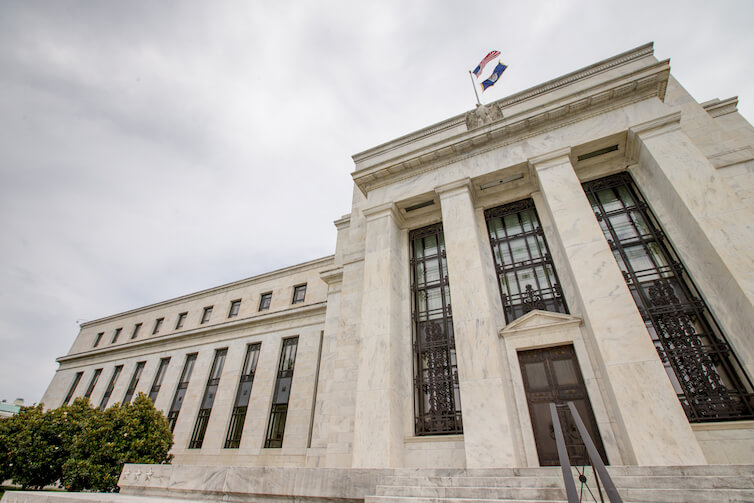Just how big does the Federal Reserve’s balance sheet need to be?

For the past couple of years, the big question in U.S. monetary policy has been when the Federal Reserve will raise short-term interest rates. After raising short-term rates 0.25 percentage points one time in 2015 and once again in 2016, the central bank appears ready to increase rates several times in 2017. The discussion is now turning to the Fed’s balance sheet. Central bankers appear ready to reduce the amount of assets held by the central bank as they “normalize” monetary policy. But it’s not entirely clear that a return to normalcy is the best approach.
Thanks to extraordinary monetary policy in the form of quantitative easing, the balance sheet of the Federal Reserve grew from about $900 billion in 2007 before the financial crisis to about $4.5 trillion currently. The Federal Open Markets Committee, the Fed’s policy-setting committee, has stated that its plan is to passively reduce the balance sheet by allowing the assets it holds to mature and not reinvest the funds. In other words, the Fed will collect the proceeds from government bonds and mortgage-backed securities but it won’t buy any new ones. But when will this passive disinvestment begin and how will the committee communicate the policy?
The decision about the size of the balance sheet is a choice about the future set of tools the Federal Reserve will use. Shrinking the balance sheet will, as former Federal Reserve Chair Ben Bernanke notes, return the toolbox to the pre-2008 form, where the Federal Funds Rate was controlled via the buying and selling of bonds in the open market. Keeping the balance sheet large would mean the tools currently in use—such as paying interest on excessive bank reserves and taking short-term deposits from institutional lends—would become the long-term tools.
But there are broader implications for future monetary policy. The balance sheet grew so much over the past 10 years because the Fed was purchasing massive amounts of assets to stimulate the economy and financing those purchases by increasing banks’ reserves at the Federal Reserve. Reducing the balance sheet and reducing the amount of reserves would send a signal that the increase in the amount of money in the economy—creating an expansionary monetary policy—was only temporary.
By reducing the balance sheet after the United States’ first experience with quantitative easing, it could set a precedent for the next round, signaling that future increases would also be temporary. David Beckworth of the Mercatus Center argues that a temporary increase in the monetary base is going to be far less effective than a permanent increase, using the example of the United States going off the gold standard. A temporary increase may not convince the public that the inflation and economic growth will be permanently higher and therefore may not increase aggregate demand as much. Reductions in the balance sheet today could be a signal that future asset purchases would be temporary and less effective.
Perhaps it would be harder to reduce the monetary base if an expansionist monetary policy via asset purchases were financed by an increase in currency in the form of direct cash payments to households. This argument for “helicopter drops” as possibly more convincing (noted by Beckworth) is made by Columbia University economist Michael Woodford.
It’s not clear when the Federal Reserve will start passively decreasing its balance sheet, but the answer may come as soon as the Federal Open Markets Committee’s next meeting in June. Unlikely as it seems, a reconsideration of reducing the Fed’s stock of financial assets may be in order. The impact of future asset purchases by the Fed—likely in an era of permanently lower interest rates and perhaps required to fend off the inevitable next recession—may depend upon it.
